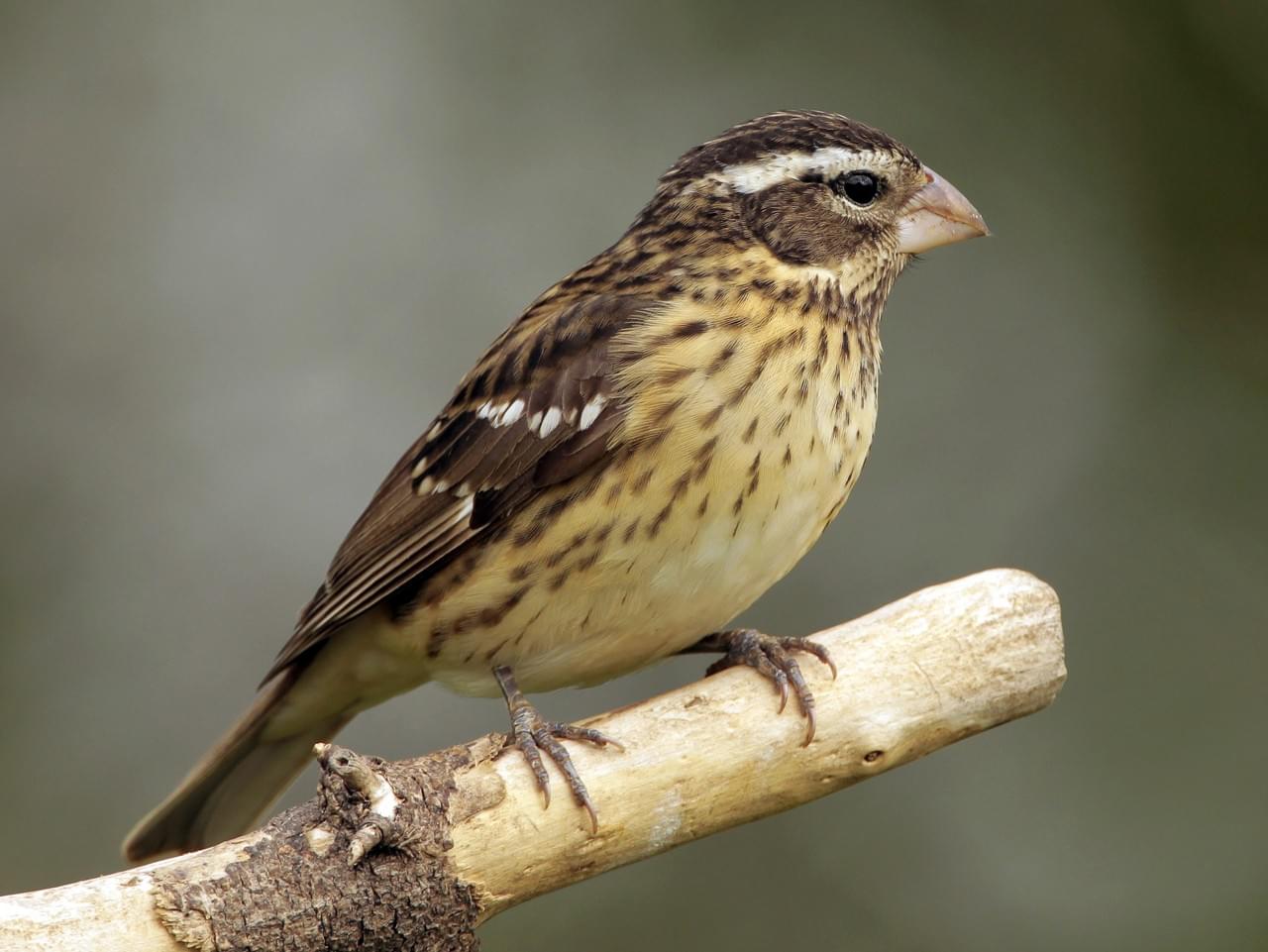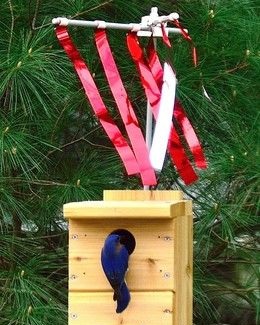Rose-breasted Gosbeaks
Every spring we are fortunate to see Rose-breasted grosbeaks visit our feeders for an all too brief time as they make their way north to breeding areas. The male is very handsome, sporting black and white plumage, with a v-shaped splash of vibrant red on the chest. The female’s plumage is primarily brown and white, with its underparts heavily streaked. On females you may also see the yellow wing linings. Both males and females have a large, triangular shaped bill. Some years they are scarce at the feeders but others we see small flocks of these birds settle in to feeding areas and seemingly remain for as much as three or four weeks. It’s very likely that you are seeing a daily exchange of at least some of those grosbeaks, though. Birds you saw yesterday may already have moved on to be replaced by new arrivals. They readily accept a variety of seeds, mostly sunflower and safflower, and most tube, hopper, and platform feeders accommodate them nicely. Let us know when and how many you see.
Indigo Bunting
Another very nice bird, although not as common in numbers at feeders as the RB Grosbeak, is the Indigo Bunting. A breeding male Indigo Bunting is blue all over, with slightly richer blue on his head and a shiny, silver-gray bill. Females are basically brown, with faint streaking on the breast, a whitish throat, and sometimes a touch of blue on the wings, tail, or rump. Immature males are patchy blue and brown. One may see them feeding on sunflower, safflower, millet, and finch feed. They are apt to visit hanging feeders as well as forage on the ground.
This small bright blue bird spends its winters in central and southern parts of South America, and can been seen across eastern North America in the spring and summer months. Indigo Buntings eat small seeds, berries, buds, and insects. They are common on the edges of woods and fields; along roads, streams, rivers, and power line cuts; in logged forest plots, brushy, and abandoned fields where shrubby growth is returning. A great local spot to see Indigo Buntings is along the Harpeth greenway that runs behind Ensworth high school and Warner parks where the field hits the tree line along the Harpeth River. They can be seen darting in and out of the tree line foraging for insects and small seeds in the fields and trees.
Like all other blue birds, Indigo Buntings lack blue pigment. Their jewel-like color comes instead from microscopic structures in the feathers that refract and reflect blue light, much like the airborne particles that cause the sky to look blue.
Baltimore and Orchard Oriole
The Baltimore and Orchard Oriole are not really common spring feeder birds but worth mentioning. They migrate through TN on the way to their breeding destinations, which tend to be north of TN. Some of my bird store associates in Iowa and Ohio do a very strong “Oriole” business because they are in the heart of Oriole breeding territory. Both species of Oriole are insect, fruit and nectar feeders.
We often encounter a customer that reports a Baltimore at their seed feeder which would be extremely unusual, but not impossible. After a few questions and shared pictures it is usually determined to be a male Eastern Towhee. There are similarities but when seen side by side very distinct differences.
The Baltimore is the more familiar of the two and is known for its bold orange and black plumage. Females are olive to brown above and burnt orange-yellow below. White wing bars are very noticeable. Baltimore’s are about 8” in length, long tailed, and have sharply pointed beaks.
The Orchard Oriole is slightly smaller. The male is a rich chestnut color on its underparts and black above. Females are an olive-green above and yellowish below, much like female Tanagers, but have distinguishable white wing bars.
Over the course of 25 years I have tried various proven methods of attracting Orioles to my yard with little success. Available information about Orioles suggests orange halves and jelly are the two most common food choices to grab an Orioles attention. None of my attempts with these offerings ever produced results.
The years I did attract them I did nothing specific to make it happen. A few times I had multiple male Orioles visiting hummingbird feeders, and other years it has been the moving water source (fountain) that is very popular with all birds. The times they decided to come to hummingbird feeders were likely a result of a lack of natural food sources they would normally be drawn to during their spring travel. Over the course of the few days Orioles were visiting my hummingbird feeders I also presented orange halves in plain view, because that’s what you always see pictures of them feeding on, but they showed no interest and seemed to be content with the sugar water nectar.














